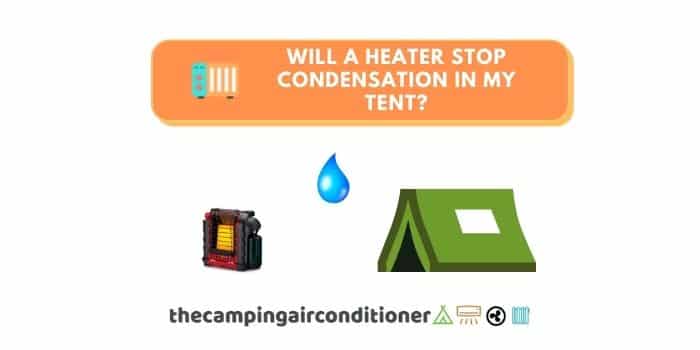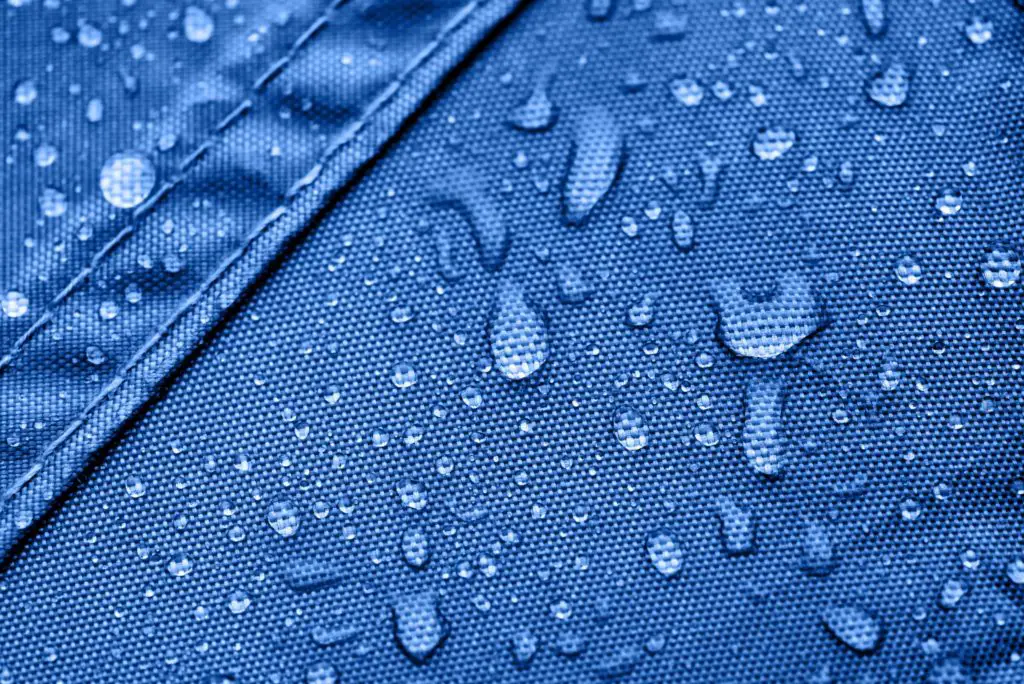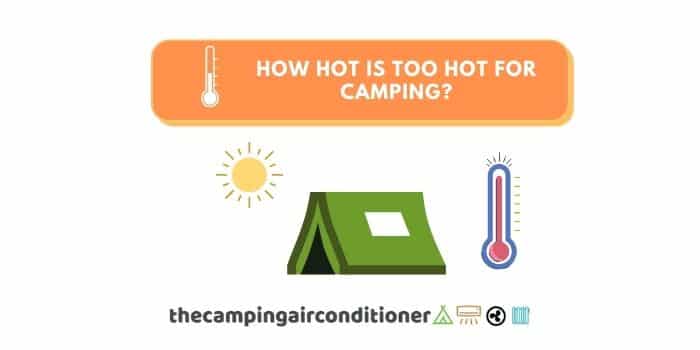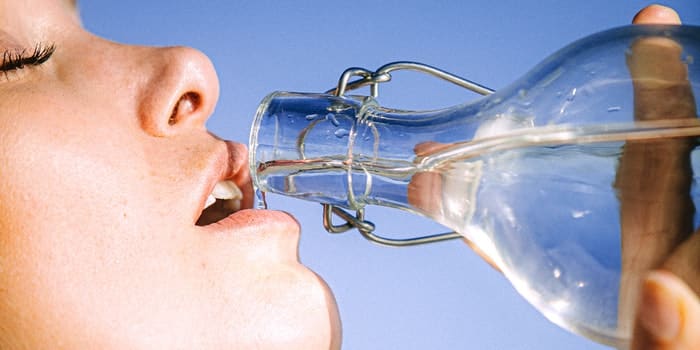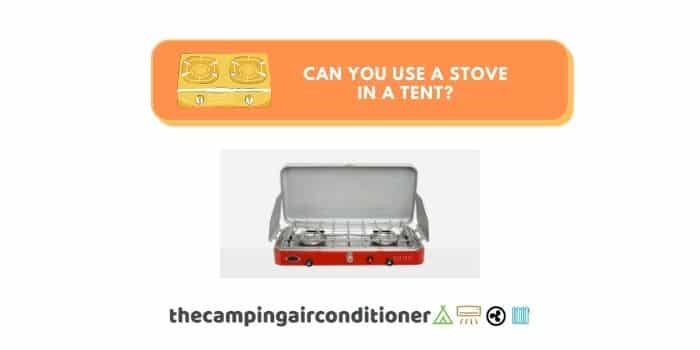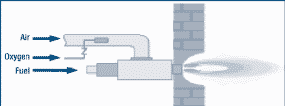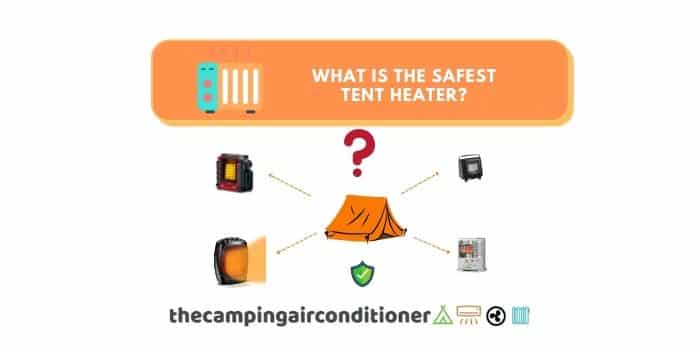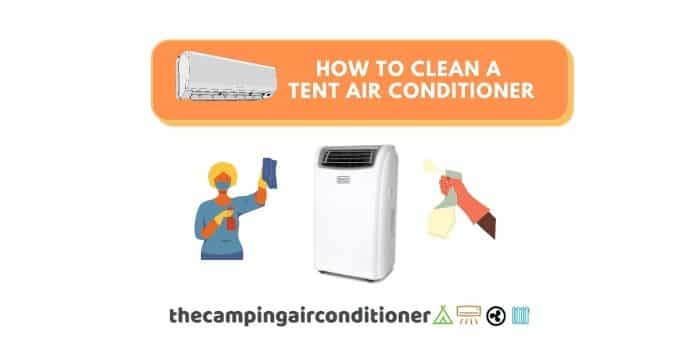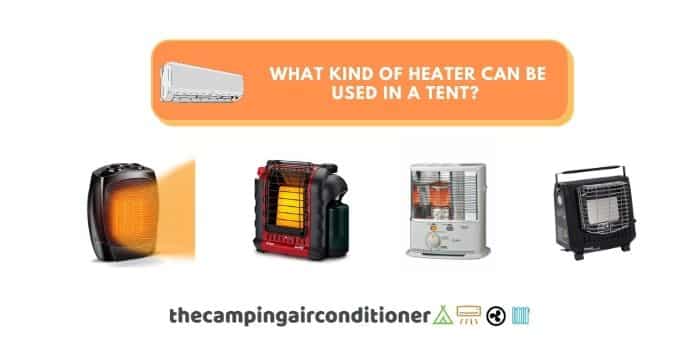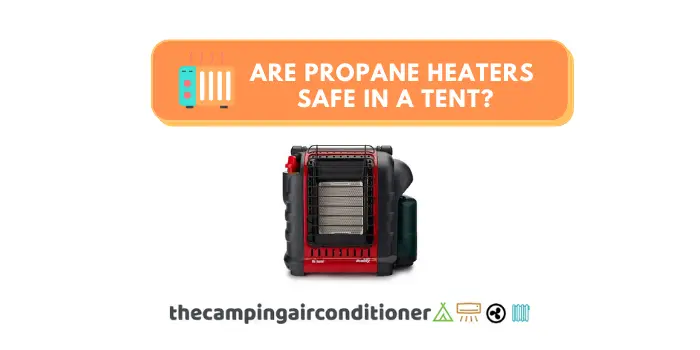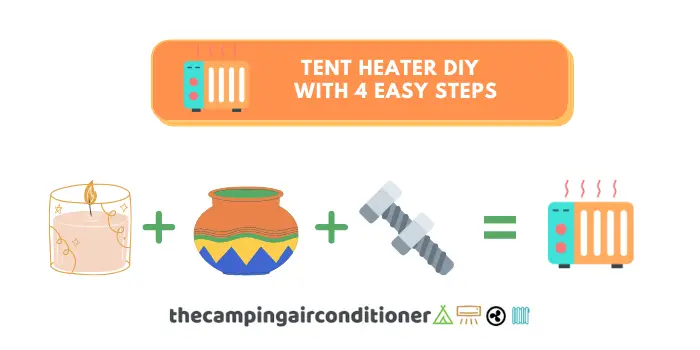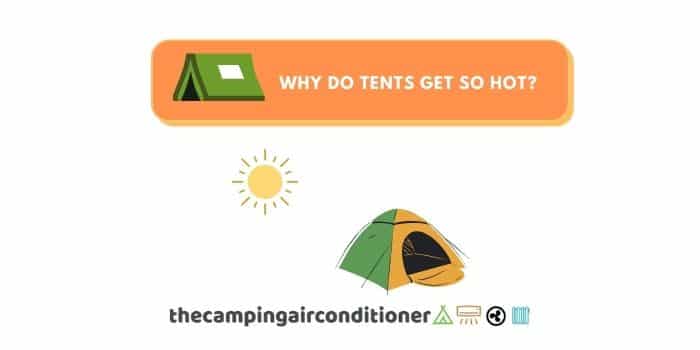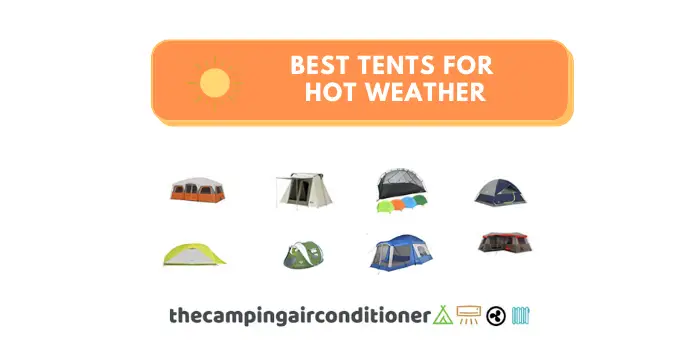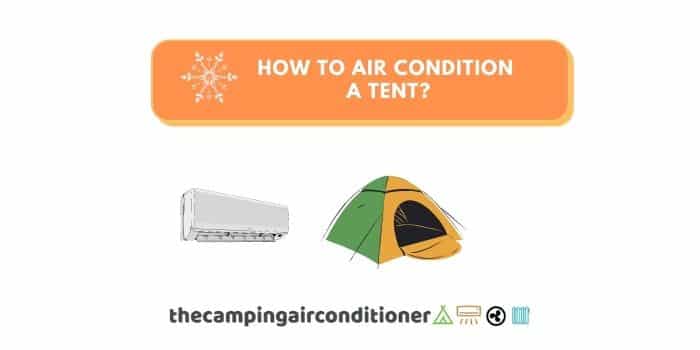Luxury tents with air conditioning for a comfy camping season!
Luxury camping have been increasing at exponential rates in the last few years. Also known as Glamping (a combination of words glamorous and camping), it is like going to an upgraded campsite with many hotel room features, including full-sized beds, temperature control, and plenty of space.
If you are reading this article, you probably wonder whether there are luxury tents with air conditioning?
Good news – yes, there are. However, the tent air conditioners will probably be purchased separately from your tent and installed on your tent. But don’t worry, installation is easy and quick, with many ac units not requiring any kind of installation.
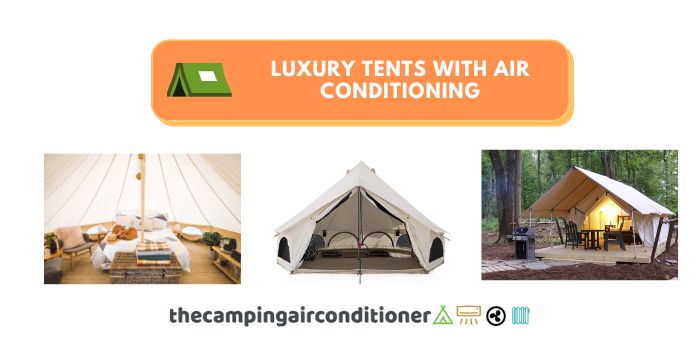
By the way, The Camping Air Conditioner is sponsored by readers. When you buy through one of our links, we may earn an affiliate commission at no extra cost to you.
Luxury Tents with Air Conditioning - Summary Review
In a hurry? Don’t worry; we have prepared a quick summary to help you find the best luxury tents with air conditioning optionality for you (a detailed review of each product is found in the following sections, though).
What are the best options for luxury tents with ac openings?
If you want to install an AC unit in a tent, make sure that it has the following features as a minimum:
- Electric outlets/ports for passing cables through
- Offer good insulation
- Lateral openings, which will be used if you decide to go ahead with a window AC option.
We have chosen 3 models that are great alternatives for luxury tents with air conditioning.
JTYX Pyramid Tent Yurt Tent Outdoor
JYTX Pyramid Tent Yourt will easily fit a couple inside it and has lots of internal space. With a base diameter of 4m (you also have 3 and 5m options), it can accommodate 2 Queen-size beds or 1 Queen-size bed with two single size beds.
The tent fabric is made of 285gsm cotton canvas with waterproof PU coating and heavy-duty brown 540gsm waterproof PVC as a groundsheet, ensuring excellent insulation and waterproofness. The tent also come with one stove jacket, allowing comfortably to use it during winter as well.
Even though it is heavy (28kgs), it is easy and quick to set up, taking approximately 30 minutes to have your shelter ready. Its steel tubes are galvanised, ensuring durability and robustness to the structure. If you decide on a window AC option, it has side openings that will facilitate installation.
Whatever AC approach you choose, we recommend a model that provides at least 5000 BTU for this tent (our recommendation is BLACK+DECKER Portable Air Conditioner – 8,000 Btu).
Pros
- Good insulation
- Comes with waterproof coating
- Stable and heavy-duty
Cons
- Tent is heavy
- Pricey
- Bell Tent with 3m, 4m or 5m of diameter
- Made of canvas with PU coating for waterproofness
- Capacity - 4, 6, 8 campers (recommended)
WhiteDuck Avalon Canvas Bell Tent
WhiteDuck Avalon Canvas Bell Tent is a luxurious tent model that can easily be air-conditioned. It comes in 4 different sizes (heights of 4M, 5M and 6M) with a capacity of up to 10 campers – refer to the image below to better understand potential arrangements.
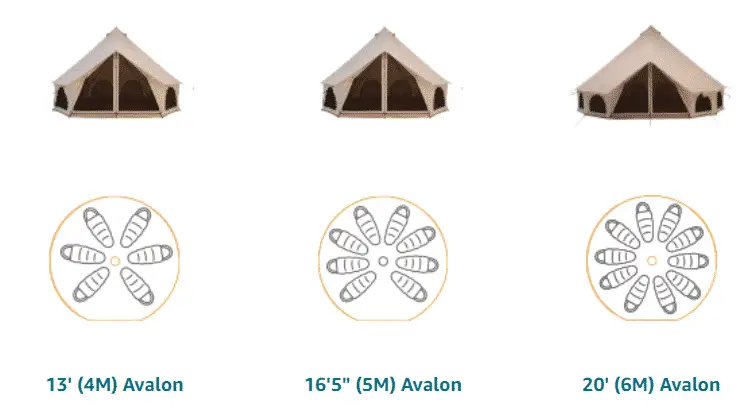
With lateral openings, electric outlets, and pocket organizers, installing an AC unit in this tent will be hassle-free. It comes with a tremendous value-for-money relationship when compared to other luxury tents.
Its structure is robust with galvanized steel poles and double-stitched seams with reinforced corners for added strength. Its guy ropes come with special UV protection, ensuring maximum durability.
Further, it has a refined and modern design that will draw attention to its sophistication. The tent is made of duck cotton canvas, with excellent waterproofness.
For this model, we recommend AC units with at least 7000 BTUs (our recommendation is BLACK+DECKER Portable Air Conditioner – 8,000 Btu)
Pros
- The tent is spacious and comfortable
- It has vents for ventilation that will facilitate window AC installation
- Easy set-up
- Great Brand
Cons
- It is heavy
- Bell Tent with 4m, 5m or 6m of diameter
- Made of canvas with waterproof coating
- Capacity - 6, 8, 10 campers (recommended)
- Multiple lateral openings
WhiteDuck Alpha Canvas Wall Tent
WhiteDuck Alpha Canvas Wall Tent comes with multiple size options and can fit up to 18 campers (9 glampers) – it is impressive.
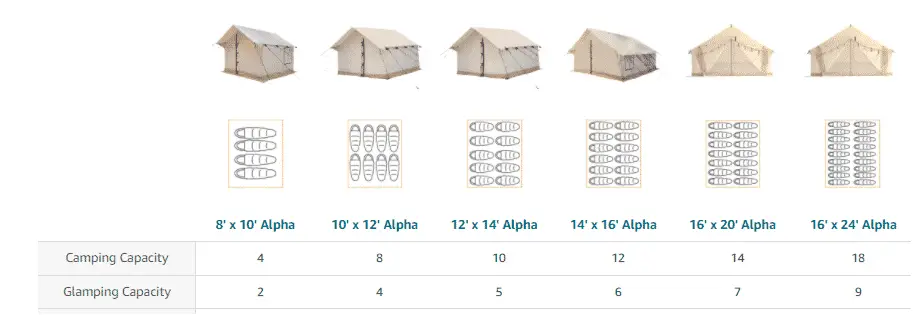
This premium tent made of canvas already comes with a Free-floating PVC Floor. The internal space is enormous, and conversely to the other two models, it has straight walls, increasing interior room. Its side-openings can easily fit a window AC unit.
Each wall tent comes with a sod cloth that is sewn onto the tent ground seam at the bottom of the tent and extends a generous 8″ beyond the tent floor.
It requires 2 to 3 people to assemble, but its structure offers high durability and stiffness. All the seams are double-stitched, corners are reinforced for added robustness.
WhiteDuck Alpha Canvas Wall Tent’s doors have an additional buckle fastening system with an additional flap across the door panels for extra protection.
As previously discussed, this tent comes in multiple sizes. For tents with more than ten people, do not hesitate to buy an AC unit with at least 12,000 BTU (our recommendation is Whynter Elite ARC-122DHP 12,000 BTU).
Pros
- The tent is spacious and comfortable
- Lateral vents that accommodate an AC
- Multiple size options
- Electric outlets included in tent structure
Cons
- Not easy to set up
- Expensive
- Wall Tent (multiple sizes - from 7.45m2 to 35m2
- Made of canvas with waterproof coating
- From 4 to 18 campers
- Large frontal door
How to install an air conditioner in a luxury tent?
Glamping tents are usually spacious and have multiple openings to improve ventilation and mitigate scorching temperatures on summer days.
Among the multiple options for tent AC units, we recommend using either a portable AC unit or a window AC unit.
Portable units are easy to install (most of them do not even require installation), transport, and come with good efficiency levels. On the other hand, window AC units offer better reliability and cooling outputs, but might require some minor adjustments.
To fit a window AC unit in a tent, you can use one of its vent openings and adjust it for the equipment. Most glamping tents come with zippers that let you adjust the opening and install your device (ensure dimensions, though).
If any adaptations are required, ensure you properly insulate your tent to avoid air leaks.
We suggest placing your mounted AC unit above a metallic stand (you can also use wood) so that the device is not directly in touch with the ground.
Luxury tent with air conditioning - how many BTU do I need?
As a rule of thumb, we suggest using the following guidance metrics:
- Insulate tents will need at least 4 BTU per cubic foot.
- Tents without proper insulation will require at least 5 BTU per cubic foot (25% extra power required)
- If your tent is exposed to the sunlight for long hours and has no insulation, we recommend at least 6 BTU per cubic foot (50% extra power required)
To calculate your tent’s volume (cubic feet), you will need the 3 dimensions of your shelter (length, height, width). If you want to know further details about these guidance metrics, read our guide on what AC size you should buy for your tent.
As an overall guidance, we suggest the following:
| Size | Volume (cubic feet) | Insulated Tent | No insulation (1.25X) | No insulation and sun exposure (1.5X) |
| Small Tents | 200 | 800 BTU | 1,000 BTU | 1,200 BTU |
| Medium Tents | 350 | 1,400 BTU | 1,750 BTU | 2,100 BTU |
| Large Tents | 700 | 2,800 BTU | 2,500 BTU | 4,200 BTU |
| Family Tents | 1,250 | 5,000 BTU | 6,250 BTU | 7,500 BTU |
Below are our ac recommendations based on your tent size (noting that for the luxurious models detailed above, we highly recommend at least 5,000 BTUs).
Cheaper Alternatives to the luxury models (with AC port)
Apart from luxury models detailed above, we recommend the following tents:
- Bushnell Shield Series cabin – Best Medium-sized tent (6 people)
- Ozark Trail 16×16-Feet 12-Person Instant Tent – Best Large Family Camping Option (12 people)
- The Wenzel Klondike 8-Person – Best option with screen room (8 people)
- Coleman Elite Weather Master – Best Heavy-Duty option
FAQ
What is the best AC for a luxury tent?
Glamping tents are known to be spacious. Therefore, we recommend portable AC and window AC units, as battery-powered options will not be able to cool down big tents.
How to insulate my luxury tent for AC?
To insulate a tent for ac, you should consider the following options:
- Use a tent tarp
- Use duct tape and/or pool noodles to suppress any minor leakage
- Insulate your tent floor
- Cover your tent with thermal blankets
- Check your tent material
Conclusion
Luxury tents with air conditioning are wise alternatives to improve your glamping trips. Make sure you choose a suitable tent and match it with the required cooling output.
Whether you decide to go with a portable AC option or a window-mounted unit, ensure that your tent is adequately insulated. It will improve cooling capacity and performance.






















